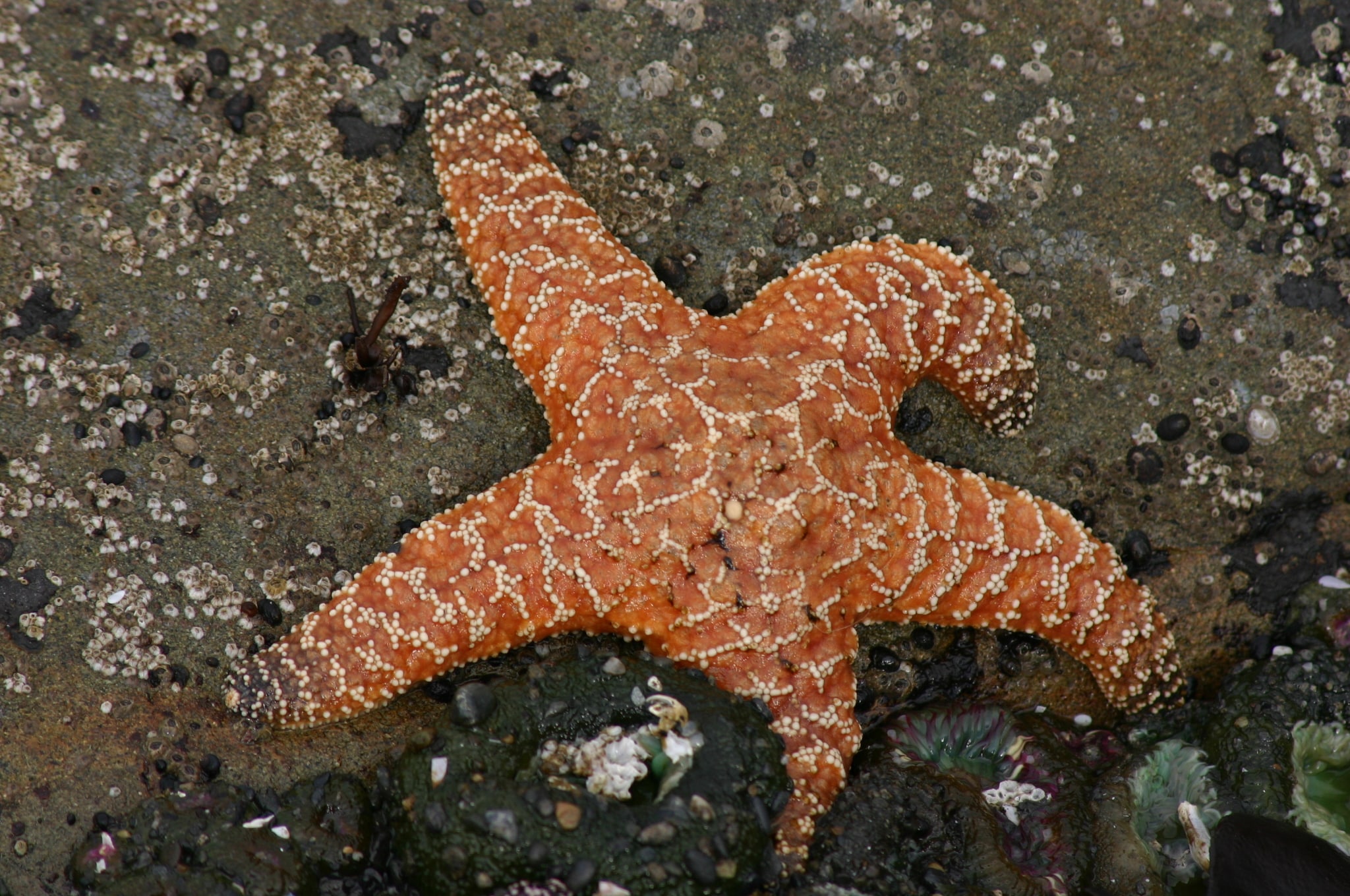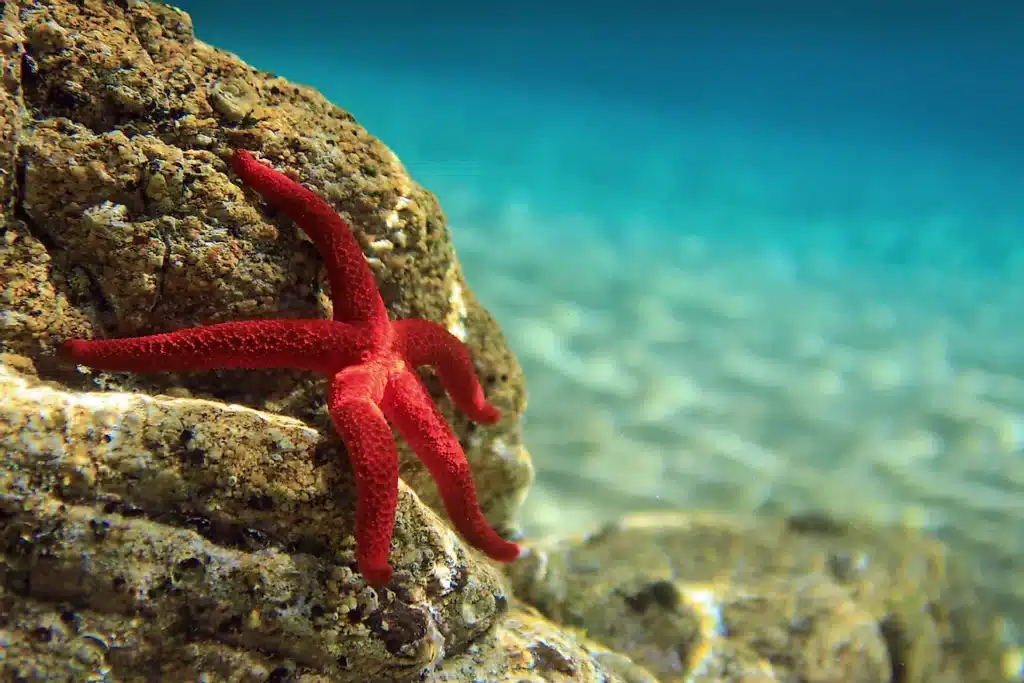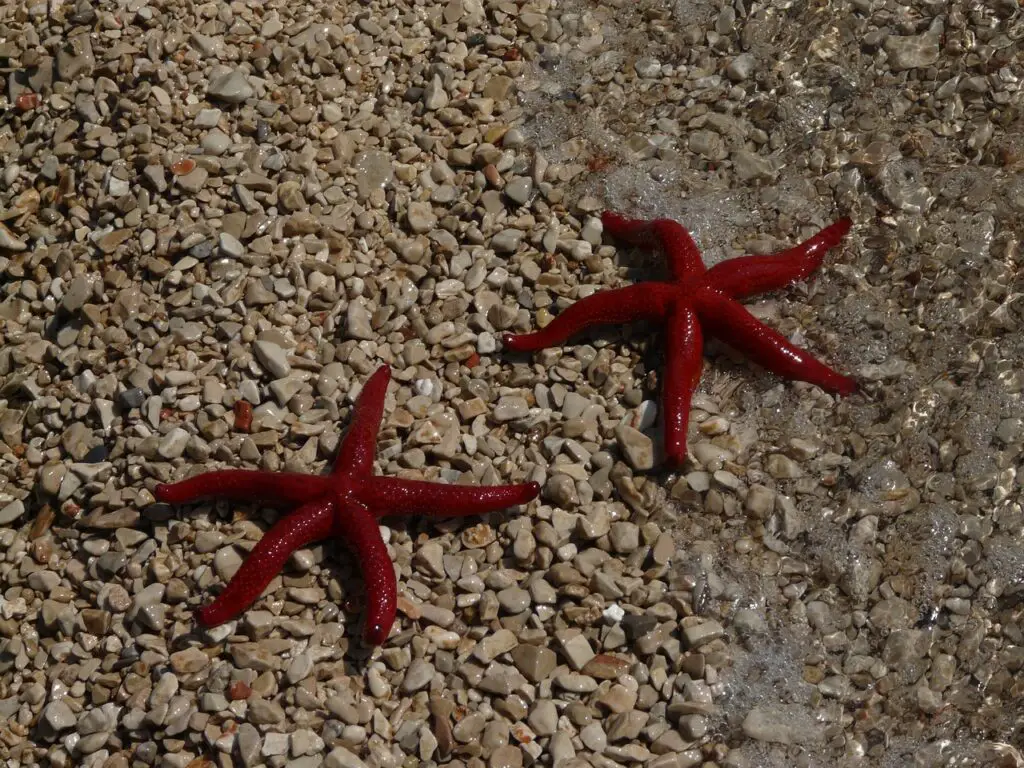What Eats Starfish

Introduction
What Eats Starfish: Beneath the shimmering waves of Earth’s oceans lies a mesmerizing world teeming with life, where the delicate balance of nature’s interactions orchestrates the drama of survival and predation. In this underwater realm, starfish, those enigmatic and graceful echinoderms, play a vital role. But what goes on beneath the tranquil surface? What are the creatures that lurk in the depths, preying upon these captivating star-shaped wonders?
Our journey into the depths of marine ecology embarks on a quest to unveil the predators of starfish, shedding light on the intricate web of life that sustains the oceanic ecosystem. These seemingly invulnerable creatures, renowned for their regenerative abilities and unique adaptations, are not without their share of threats from other marine denizens. From cunning cephalopods to voracious fish, our exploration will introduce the diverse cast of characters that partake in the age-old dance of predator and prey in the world’s oceans.
But the story goes beyond mere predation. It delves into the intricate adaptations and strategies employed by both starfish and their predators in this never-ending battle for survival. From stealthy ambushes to remarkable defense mechanisms, the theater of predation in the underwater realm is a fascinating spectacle.
As we venture deeper into this captivating exploration, we aim to foster a greater understanding of the interconnectedness of marine life, where every creature has its role to play in the delicate ballet of nature. By unraveling the mysteries of what eats starfish, we gain insight into the complex web of relationships that shape the oceans, highlighting the ongoing drama of life and death beneath the waves.

What animal eats starfish?
Predators (animals that eat them) include crabs, lobsters, bottom dwelling fish, other sea stars, and seagulls. Sometimes a predator will grab onto a sea star’s arm and the sea star can detach or let go of it to get away. But don’t worry, they can regrow their arms!
Several marine animals include starfish in their diet. Predators of starfish vary depending on the species and their size. Some of the common predators of starfish include various species of fish, such as triggerfish, pufferfish, and some types of wrasses. Sea otters, a marine mammal, are also known to consume starfish, particularly in kelp forest ecosystems. Additionally, some sea birds, like gulls and oystercatchers, may prey on starfish when they are accessible in intertidal zones. Crabs and some larger sea snails are also known to feed on starfish.
It’s worth noting that the prevalence of starfish in the diet of these predators can depend on factors like the availability of other food sources and the specific ecological conditions of their habitat. Starfish, despite their ability to regenerate lost limbs, are not invulnerable, and they play a role in the broader predator-prey relationships within marine ecosystems.
Which fish eat starfish?
Sharks. Only sharks that swim near the bottom of the sea eat starfish. Nurse sharks, horn sharks and Port Jackson sharks are all known to eat them. All of these sharks have strong enough jaws to crush the hard bony outer skeleton of the starfish and eat the flesh underneath.
Several fish species are known to include starfish in their diet. Some examples include:
Triggerfish: Triggerfish, known for their strong jaws, can feed on starfish, particularly the crown-of-thorns starfish.
Pufferfish: Pufferfish are omnivorous and opportunistic feeders, and they may consume starfish when the opportunity arises.
Wrasses: Certain species of wrasses, which are reef-dwelling fish, may prey on starfish, especially when hunting for small invertebrates in the reef ecosystem.
It’s important to note that not all fish species eat starfish, and the specific diet of a fish can vary depending on its habitat and feeding preferences.
Is a starfish a top predator?
As such, sea stars should be considered as the benthic counterpart of the pelagic apex predator: the polar bear. The apex predator position of sea stars is also corroborated by their feeding type such as polar bears that are top predators and opportunistic scavengers.
No, a starfish is not considered a top predator in marine ecosystems. Top predators occupy the highest trophic level in an ecosystem, meaning they have few natural predators themselves and play a significant role in controlling the populations of other species in the food web. Starfish are not typically top predators because they are preyed upon by various other marine animals, including certain fish, sea otters, sea birds, and larger invertebrates.
While starfish are carnivorous and feed on a variety of marine invertebrates such as mollusks and crustaceans, they are not at the apex of the food chain. Instead, they occupy lower trophic levels and are part of a complex web of predator-prey interactions in marine ecosystems. These interactions involve multiple species, each playing a role in controlling the populations of other species and contributing to the overall balance of the ecosystem.
Top predators in marine ecosystems are often larger animals like sharks, killer whales, and some large species of fish, which have fewer natural predators themselves and exert significant influence over the dynamics of the marine food web.
Do starfish eat live fish?
But with that being said, some will even eat fish (if they’re able to get their arms around one). In other situations, certain starfish will eat sea urchin, barnacles, bristle worms, coral polyps, and crabs.
Starfish primarily feed on a diet of marine invertebrates, and they typically do not actively hunt or feed on live fish. Instead, their diet mainly consists of organisms such as mollusks (like clams and mussels), crustaceans (such as crabs and shrimp), and other small marine animals.
Starfish have a unique feeding mechanism. When they encounter their prey, they use their tube feet to hold onto the prey’s shell (in the case of mollusks) or exoskeleton (in the case of crustaceans). They then extend their stomachs out through their mouths and into the gap between the shells or exoskeletons. Digestive enzymes are released from the stomach onto the prey, which gradually break down the tissues inside the shell or exoskeleton. The resulting liquefied food is then absorbed into the starfish’s stomach, providing it with nutrients.
While starfish are opportunistic feeders and can consume a variety of prey items, including carrion or dead organisms, actively hunting and capturing live fish is not a common behavior for them. Their feeding strategy is better suited for the types of slow-moving or sessile (non-moving) marine invertebrates that they typically encounter in their habitat.
Can starfish bite?
Do starfish bite? No, starfish don’t bite. They have no teeth and are not dangerous to humans. These small sea creatures are not exactly known for their voracious appetite and won’t harm you.
No, starfish cannot bite in the way that animals with jaws or teeth can. Starfish are marine invertebrates, and they lack the physical structures necessary for biting or chewing like mammals or other animals. Instead, starfish are primarily carnivorous and have a unique feeding mechanism.
When a starfish encounters prey, typically bivalves like clams or mussels, they use their tube feet to hold onto the shell of the prey. Then, they extend their stomach out through their mouth and into the gap between the two halves of the shell. Digestive enzymes are released from the stomach onto the prey, which gradually breaks down the tissues inside the shell. This liquefied prey is then absorbed into the starfish’s stomach, providing it with nutrients. While they can exert pressure with their tube feet, this is not the same as biting or chewing in the way animals with teeth do.
Can sharks eat starfish?
Only sharks that swim near the bottom of the sea eat starfish. Some are :Nurse sharks, Horn Sharks and Port Jackson Sharks. All of these sharks have strong enough jaws to crush the hard bony outer skeleton of the starfish and eat the flesh underneath.
Yes, some species of sharks can and do eat starfish, although starfish are not typically a primary food source for most shark species. Sharks have diverse diets that can include various marine animals, depending on their size, habitat, and feeding habits. Some larger species of sharks, such as the nurse shark and the sand tiger shark, have been known to consume starfish when other prey options are limited.
It’s important to note that starfish are not a significant or staple part of the diet for most sharks. Sharks typically have a wide range of prey items in their diet, including fish, rays, other sharks, marine mammals, and sometimes even larger invertebrates. The consumption of starfish by sharks would likely be opportunistic and occur when starfish are encountered in their foraging areas.
The dietary preferences and behaviors of sharks can vary significantly among species, and they are influenced by factors such as the availability of prey, geographic location, and local ecological conditions. While some sharks may include starfish in their diet on occasion, it is not a common or predominant food source for them.
Can a starfish hurt a person?
Starfish do not attack humans, but can inflict painful stings with the release of venom, when they are accidently stepped upon or handled (picked up).
Starfish are generally not considered harmful to humans. They lack the physical characteristics or mechanisms to inflict harm or cause injury to people. However, there are a few things to keep in mind when handling starfish:
Handling with care: Starfish are delicate marine creatures, and their bodies can be easily damaged if mishandled. When touching or picking up a starfish, it’s essential to do so gently and with care to avoid injuring the animal.
Tube feet suction: Starfish have tube feet with tiny suction cups that allow them to adhere to surfaces. While these suction cups are not designed to harm humans, they might lightly grip a person’s skin if the starfish is handled. This sensation is usually not painful or harmful and can be easily disengaged by gently removing the starfish.
Hygiene: It’s a good practice to wash your hands thoroughly after handling starfish or any marine creatures to remove any potential contaminants or bacteria that may be present in seawater.
In summary, starfish are not dangerous to humans, and their primary defense mechanisms are related to their survival in the marine environment rather than causing harm to people. However, it’s important to treat these animals with respect and care when encountering them in their natural habitat to ensure their well-being and preserve the delicate balance of marine ecosystems.
How long do starfish live?
35 years
Starfish use filtered sea water to pump nutrients through their nervous system. 2. They can live up to 35 years.
The lifespan of a starfish can vary depending on its species and environmental conditions. In general, smaller species of starfish tend to have shorter lifespans, often ranging from a few years to several years. Larger species can live longer, with some reaching up to 35 years or more in favorable conditions.
The life expectancy of a starfish can also be influenced by factors such as predation, disease, and the availability of food. In some cases, starfish may regenerate lost limbs or even their entire body, which can extend their lifespan.
Overall, starfish exhibit a range of lifespans across different species, and their longevity is influenced by a combination of genetic factors and environmental conditions in their specific habitat.

Conclusion
Our deep dive into the enigmatic world of what eats starfish has unveiled a complex and awe-inspiring tapestry of life in the ocean’s depths. The predators of starfish, a diverse cast of characters, underscore the intricate dance of survival and predation that governs marine ecosystems. As we conclude our exploration, several key insights come to the fore.
First and foremost, the predator-prey relationships in the marine realm are a testament to the delicate balance of nature. Starfish, often seen as resilient and regenerative, are far from invulnerable. They face a plethora of threats from a wide range of predators, each equipped with its unique set of adaptations and strategies.
Second, the adaptations displayed by starfish and their predators are nothing short of remarkable. From the cryptic camouflage of octopuses to the precision of sea otters, the ongoing evolutionary arms race beneath the waves is a testament to the wonders of nature’s ingenuity.
Moreover, our exploration highlights the interconnectedness of marine life. The predation of starfish is not a one-sided story of victims and villains; it is an intricate web of relationships where every species plays a role in the overall balance of the ecosystem. The starfish predators are an essential part of this intricate dance, helping to regulateARtions and maintain the health of marine ecosystems.
As we reflect on the world of what eats starfish, we gain a deeper appreciation for the complexity of life beneath the waves. It serves as a reminder of the ongoing struggle for survival and the interdependence of all species in the vast and mysterious ocean. This exploration invites us to marvel at the beauty and resilience of the natural world while acknowledging the critical importance of preserving these delicate ecosystems for generations to come.



